The rise and fall of tides
The Earth appears blue from the darkness of Space. This is because more than 70 percent of its surface is covered with oceans. The seas make up more than one million million million tons of seawater.
Every 12 hours or so, the seawater rises, then falls back again. These rises and falls are called the tides. When the water is rising, we say the tide is flowing. When it is falling, we say the tide is ebbing. The movement of the ocean waters is caused by the Moon and by the Earth spinning. Gravity pulls the Moon and Earth together. As the Earth turns, the Moon pulls at the ocean water directly beneath it, causing the water to rise. A similar rise in sea level occurs on the opposite side of the Earth, where the water bulges out as a result of the Earth spinning. At these places, there is a high tide. Some six hours later, The Earth has turned 90 degrees. The sea then falls to its lowest point and there is a low tide.
The two experiments opposite explain how the oceans rise and fall without any change in the amount of seawater, and how the tidal bulges of water stay in the same place below the Moon, as the Earth spins beneath it.
How tides occur
YOU WILL NEED
Soccer or beach ball, glue, glue brush, glass, tinfoil, scissors, reusable adhesive, flashlight.
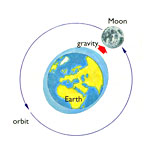
STEP 1
Tides rise beneath the Moon as the Earth turns. The gravity of the Moon tugs at the oceans, pulling the water around with it.
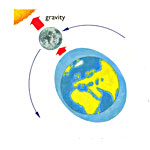 STEP 2
STEP 2
Once every two weeks, the Sun and the Moon line up with the Earth. Their combined pull creates a spring tide, where the tides a re higher than usual.
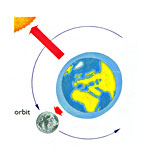 STEP 3
STEP 3
Place your Moon on a table. Wedge a small ball of reusable adhesive under the ball. This will hold it firm and stop it from rolling off the table.
YOU WILL NEED
High and low tide: plastic bowl, water, plastic ball to represent the world.
The tidal bulge: strong glue, one 8in length and two 16in lengths of thin string, plastic ball to represent the world, plastic bowl, hand drill, water.
High and low tide
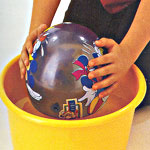 STEP 1
STEP 1
Place the bowl on a firm, flat surface, then half fill it with water. Place the ball gently in the water so that it floats in the middle of the bowl, as shown in the picture.
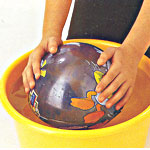 STEP 2
STEP 2
Place both hands on top of the ball, and push it down into the water gently but firmly. Look what happens to the level of water. It rises in a "high tide".
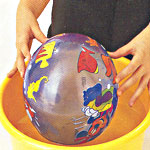 STEP 3
STEP 3
Let the ball gently rise again. Now you can see the water in the bowl dropping again. So the tide has risen and fallen, even though the amount of water is unchanged.
The tidal bulge
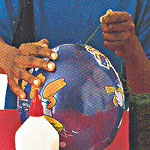 STEP 1
STEP 1
Glue the 8in length of the string very firmly to the ball and leave it to dry. Meanwhile, ask an adult to drill two holes in the rim of the bowl, one on each side.
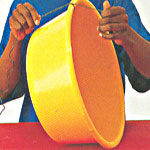 STEP 2
STEP 2
Thread a 16in length of string through each hole, and knot the string around the rim. Half fill the plastic bowl with water and float the ball in the water.
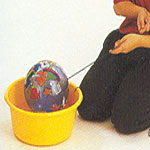 STEP 3
STEP 3
Ask a friend to pull the string on the ball toward him or her. There is now more water on one side of the ball than the other. This is called a tidal bulge.
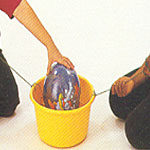 STEP 4
STEP 4
The Moon pulls on the water as well as the Earth. So now ask the friend to hold the ball in place, while both of you pull out the strings attached to the bowl until it distorts.
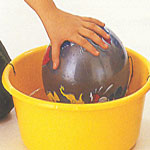 STEP 5
STEP 5
There is now a tidal bulge on each side of the world. One of you slowly turn the ball. Now you can see how, in effect, the tidal bulges move around the world as the world turns.
Back to School Projects Main

